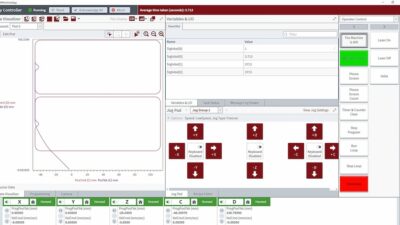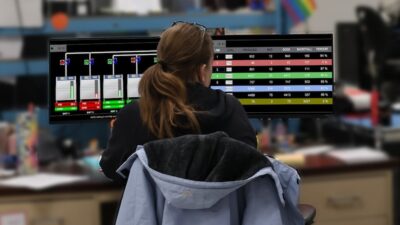Back to Basics: As lean thinking and practices continue, the definitions risk being corrupted, adapted, or mutated to nicely conform to businesses objectives. For apples-to-apples measurement, be “non-negotiable” on the following meanings, consistent with Toyota Production System definitions.
As lean thinking and practices continue, the definitions risk being corrupted, adapted, or mutated to nicely conform to businesses objectives. For apples-to-apples measurement, be “non-negotiable” on the following meanings, consistent with Toyota Production System definitions.
Set-up (changeover): The total time required to change from the last good piece with old tooling to the first good piece with new tooling. This definition includes preparation (getting ready to make the change) replacement (remove and replace the tooling), positioning , (locate the tooling in the correct location in the equipment), and adjustment (first-piece inspection, machine tweaking, trial runs). Typical set-up time reduction of 50-75% is achievable on a low-cost, no-cost basis.
Kaizen : Continuous, incremental improvement of an activity to create more value with less waste. Kaizen blitz refers to a team approach to quickly tear down and rebuild a process layout to function more efficiently.
Kaikaku : Radical improvement of an activity to eliminate waste (also called breakthrough Kaizen ); typically a 2-5 day event.
Kanban : A signaling device that gives instruction for production or conveyance of items in a pull system. Examples of a Kanban are a space on the floor, a container, a card, an empty shelf, an andon light, or electronic signal.
Poka-yoke : A mistake-proofing device, method, or procedure to prevent a defect from occurring during the process. Poka-yoke devices are specifically designed to eliminate mistakes before they become a defect. Focus is on prevention and detection before the error proceeds downstream and turns into a defect.
Waste (muda): Anything that does not add value to the product is waste and must be reduced or eliminated. Eight types are overproduction, waiting, moving, process inefficiencies, inventory, unnecessary motions, defective products, and unused creativity.
Value add (VA): Activities that transform or shape products or services that are sold to customers, such as assembly, painting, machining, forming, welding, and heat treating.
Non value add (NVA): Activities that take time, resources or space, but do not transform, or add to the customer’s desired or perceived value of a product. Waste is NVA, also inspection, test, rework, and quality audit. Many businesses will argue that these activities are VA, since they are either required by the customer or are a necessary evil. But why does the customer require inspection and test? If processes were robust (without errors), would these actions be required? Reduction or elimination of this NVA activity would reduce cost and cycle time and favorably impact customer satisfaction.
Standard work : A precise description of each work activity specifying cycle time, takt time (maximum time to produce a product to meet demand), work sequence of specific tasks, and the minimum inventory of parts on hand needed to conduct the activity. Standard work is NOT the same as work standards (rate per hour at a specific task).
Bottleneck (BN): A resource whose capacity is less than or equal to the market demand. (It is occupied 24 x 7, 365 days per year.)
Non-bottleneck (NBN): A a resource whose capacity is greater than the market demand. (It is available 24 x 7, but not always occupied).
Capacity-constrained resource (CCR): A resource between a BN and an NBN. The resource has periods of over-capacity (erratic demand, breakdowns, lack of material).
Gemba (genchi genbutsu): Going to the place (where the problem exists) to see the actual situation for understanding. The first step in problem solving is to clearly and deeply understand the situation through personal observation, data gathering, and analysis. The guiding principle is to take nothing for granted and know what you are talking about, and that is achieved through gaining first-hand knowledge of the problem or issue to be corrected.
As you take the lean journey, acquire a standard glossary of lean terms so everyone can speak the same improvement language.
| Author Information |
|
Bob Yenkner is principal with Practical Process Improvement. Reach him at [email protected]. |
https://www.practicalprocessimprovementct.com/



